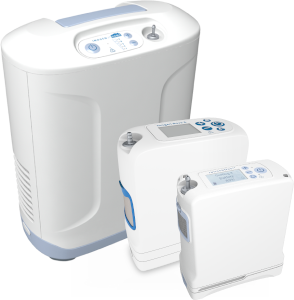Have you ever wondered how today’s oxygen concentrators came to be? While the use of oxygen for medical purposes has been around since the 1800s, the use of modern day oxygen concentrator technology is fairly new. You might be surprised by the progression from early oxygen tanks that physically stored oxygen to modern day oxygen concentrators that pull oxygen from the surrounding air, which is then delivered to patients. In fact, the history of oxygen therapy might have started earlier than you would guess. Read on to learn more about the history of oxygen therapy and the various oxygen therapy devices that have existed since the 1800s.
Discovery
While the history of oxygen therapy dates back to 1885, when Dr. George Holzapple first used oxygen to treat pneumonia, the history of oxygen—or the discovery of it, to be more precise—is a bit more complex. The discovery of oxygen dates back to 1771, when Swedish chemist Carl Wilhelm Scheele discovered its existence. Unfortunately for him, an English chemist named Joseph Priestly also discovered oxygen on his own, but published his findings three years before Scheele. Because of the complex nature of the discovery and publication, both scientists are often credited. [1] When learning about the discovery of oxygen, the origin of the name is interesting as well. The word “oxygen” is derived from the Greek words “oxy”, meaning acid, and “genes”, meaning forming. The gas was named “oxy-gène” by Antoine Lavoisier, who also claimed to have discovered it, and thus began the history of oxygen. [2]
Oxygen Use in Modern Day Medicine
During the 20th century, the use of oxygen in medicine became increasingly prevalent due to a rapid succession of discoveries and technical advances Though patients were able to inhale oxygen therapeutically as early as the mid-1800s with a device that stored oxygen for intermittent use, it was not delivered effectively until the early 1900s,when a nasal catheter and oxygen mask were first introduced [2] In the 1920s, Leonard Hill invented the oxygen tent which was later modified by Alvan Barach. In 1936, Barach laid the foundation for the use of oxygen in chronic lung disease and went on to design the first portable oxygen device for emphysema. In the 1950s, Barach trans-filled oxygen bottles for ambulatory patients with exertional shortness of breath while other scientists, noting symptom improvement for patients with lung disease, used oxygen in small, portable gas cylinders, a version of which was used regularly well into the 1970s and is sometimes still in use today.[2]
In the late 1960’s, the Medicare system began paying for oxygen for home patients. This set off “copycat” coverage guidelines in private insurance companies and within state Medicaid systems. By 1970, most commercial insurances, whether private or government, paid for home oxygen. DME companies thrived as this new, cottage industry was born. [3]
In the 1980s, two landmark studies were foundational in establishing a survival benefit for COPD patients using continuous, long-term oxygen therapy (LTOT). [2] LTOT became recognized as one of the few available therapeutic interventions that improve survival in patients with advanced COPD, which still is the primary justification for its use in COPD. These studies established our modem-day criteria for payment for oxygen therapy. They also generated support for supplemental oxygen for hypoxic patients with other chronic pulmonary conditions. [2]
Introducing Oxygen Concentrators
The history of oxygen concentrators begins in the late 1970s, when oxygen concentrators were first invented for home use, though they were quite large. As it became clear that patients wanted more mobility and freedom than the large home oxygen concentrators and oxygen tanks afforded, the portable oxygen concentrator was born. Concentrators from the 1970’s looked like console television sets. They weighed a hundred or more pounds and were bulky. They also used a lot of electricity and had no battery backup. Many companies also sent out a respiratory therapist for a monthly visit. These clinical respiratory visits became an industry standard in many parts of the country. Continuing into the 1980’s and 1990’s, concentrator technology improved rapidly. Concentrators became smaller and more efficient. Battery backup features were added as “portable concentrators” were designed to travel and be used at home or away and cleared for patient use by the FDA and FAA in the early 2000s. The current systems allow patients to continue a very active lifestyle on oxygen. [3]
Inogen created those first portable oxygen concentrators, and in the process, established the beginnings of the history of portable oxygen concentrators.
To learn more about how oxygen concentrators work, please go here: How Does an Oxygen Concentrator Work? For more information about oxygen therapy, talk to your primary health care provider.
References
- Shultz SM, Hartmann George E Holtzapple (1862-1946) and oxygen therapy for lobar pneumonia: the first reported case (1887) and a review of the contemporary literature to 1899. J Med Biogr. 2005 Nov;13(4):201-6. doi: 10.1177/096777200501300405. PMID: 16244712.
- The Story of Oxygen, John E Heffner, Respiratory Care Jan 2013, 58 (1) 18-31; DOI: 10.4187/respcare.01831 The Story of Oxygen | Respiratory Care (rcjournal.com)
- A Brief History of Home Oxygen Therapy (hqaa.org)












